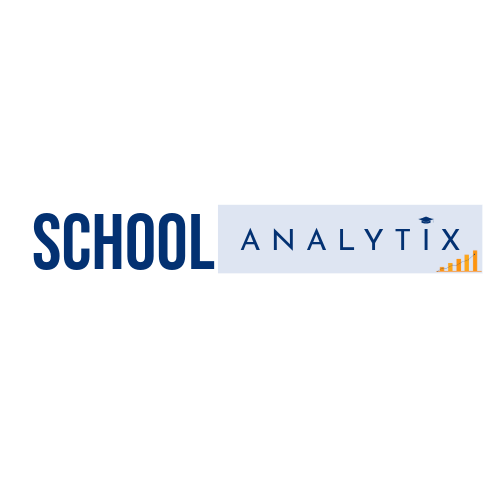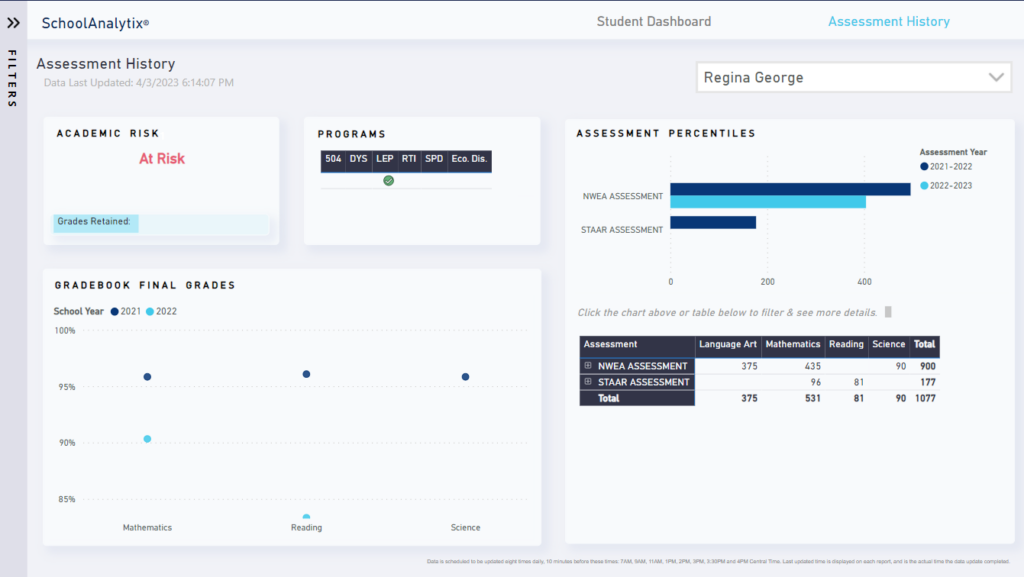In the realm of education, personalized instruction stands out as a powerful tool for maximizing student learning outcomes. Every student comes to the classroom with a unique set of strengths, weaknesses, and learning preferences. Recognizing and catering to these individual differences can significantly impact student engagement, motivation, and achievement. One invaluable resource for personalizing instruction is the Student Assessment History—a comprehensive record of a student’s academic journey. In this article, we delve into the role of the Student Assessment History in enhancing student learning outcomes through personalized instruction.
Understanding the Student Assessment History Dashboard
The Student Assessment History Dashboard serves as a repository of valuable information, capturing a student’s performance across various assessments over time. It aggregates data from formative assessments, summative assessments, standardized tests, and other evaluative measures. Through visualizations, trends, and analytics, educators gain insights into students’ academic progress, strengths, areas for improvement, and learning patterns.
Identifying Individual Learning Needs
One of the primary benefits of the Student Assessment History Dashboard is its ability to pinpoint individual learning needs. By analyzing assessment data, educators can identify specific areas where students excel and areas where they may struggle. For example, a student may consistently perform well in mathematics but struggle with reading comprehension. Armed with this knowledge, teachers can tailor instruction to address the unique needs of each student.
Tailoring Instructional Strategies
With insights gleaned from the Student Assessment History Dashboard, educators can adapt instructional strategies to align with students’ learning preferences and abilities. For instance, visual learners may benefit from the use of diagrams, charts, and graphic organizers, while auditory learners may thrive in discussions and presentations. By incorporating diverse teaching methods and modalities, teachers can create a more inclusive and engaging learning environment.
Providing Targeted Interventions
The Student Assessment History Dashboard also serves as a valuable tool for implementing targeted interventions. When educators notice a persistent pattern of low performance or areas of weakness, they can intervene promptly to provide additional support and resources. This may involve one-on-one tutoring, small-group instruction, differentiated assignments, or specialized interventions tailored to the student’s needs.
Tracking Student Progress
Continuous assessment and monitoring of student progress are essential components of personalized instruction. The Student Assessment History Dashboard enables educators to track students’ growth and development over time. By comparing current performance to past assessments, teachers can gauge the effectiveness of instructional interventions and make data-informed decisions about next steps.
Promoting Student Ownership of Learning
Personalized instruction empowers students to take ownership of their learning journey. By involving students in goal setting, self-assessment, and reflection, educators foster metacognitive skills and promote a growth mindset. The Student Assessment History Dashboard can facilitate this process by providing students with access to their own assessment data. Encouraging students to track their progress, set goals, and reflect on their learning empowers them to become active participants in their education.
Supporting Differentiated Learning
Every student learns at their own pace and in their unique way. The Student Assessment History Dashboard enables educators to differentiate instruction to meet the diverse needs of students. Whether through flexible grouping, tiered assignments, or adaptive learning technologies, educators can tailor instruction to challenge advanced learners, provide scaffolding for struggling students, and support those with diverse learning styles and abilities.
Fostering a Growth Mindset
Central to personalized instruction is the cultivation of a growth mindset—the belief that intelligence and abilities can be developed through effort and perseverance. By leveraging the Student Assessment History Dashboard to celebrate progress and acknowledge incremental improvements, educators reinforce the notion that mistakes are opportunities for learning and growth. This shift in mindset fosters resilience, self-efficacy, and a positive attitude towards learning.
Conclusion
In conclusion, the Student Assessment History Dashboard serves as a powerful tool for enhancing student learning outcomes through personalized instruction. By leveraging assessment data to identify individual learning needs, tailor instructional strategies, provide targeted interventions, track student progress, and foster a growth mindset, educators can create a learning environment that meets the diverse needs of all students. As we continue to embrace the principles of personalized learning, the Student Assessment History Dashboard will play an instrumental role in helping students reach their full potential.

